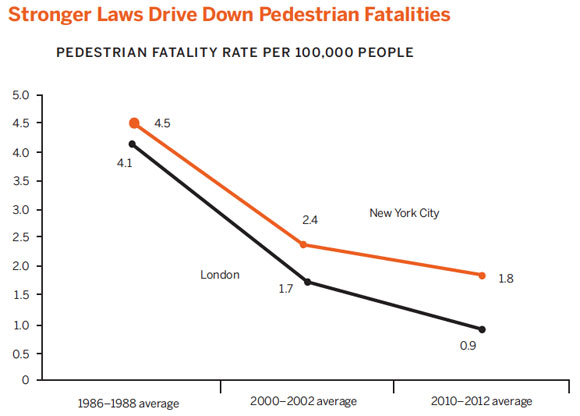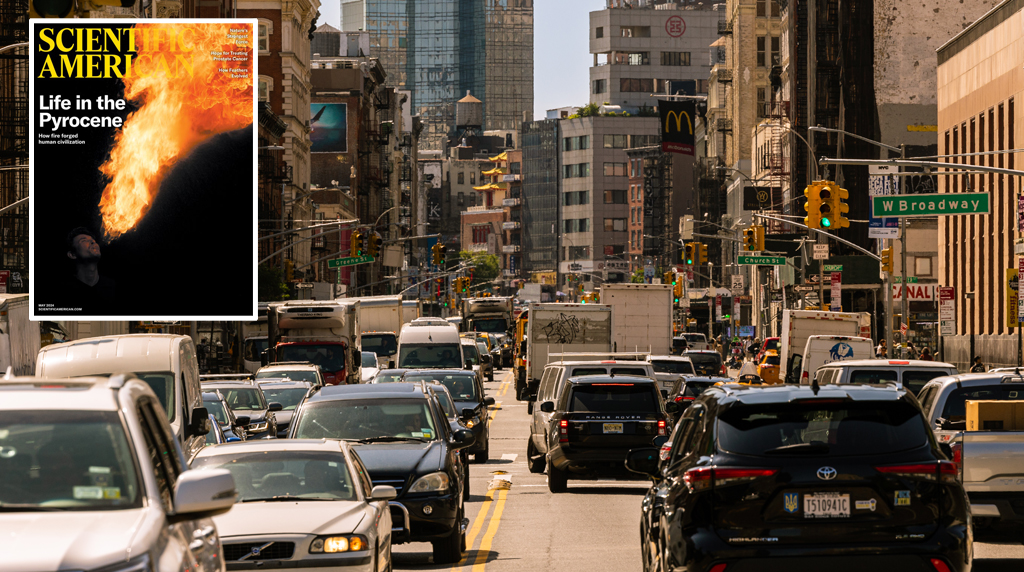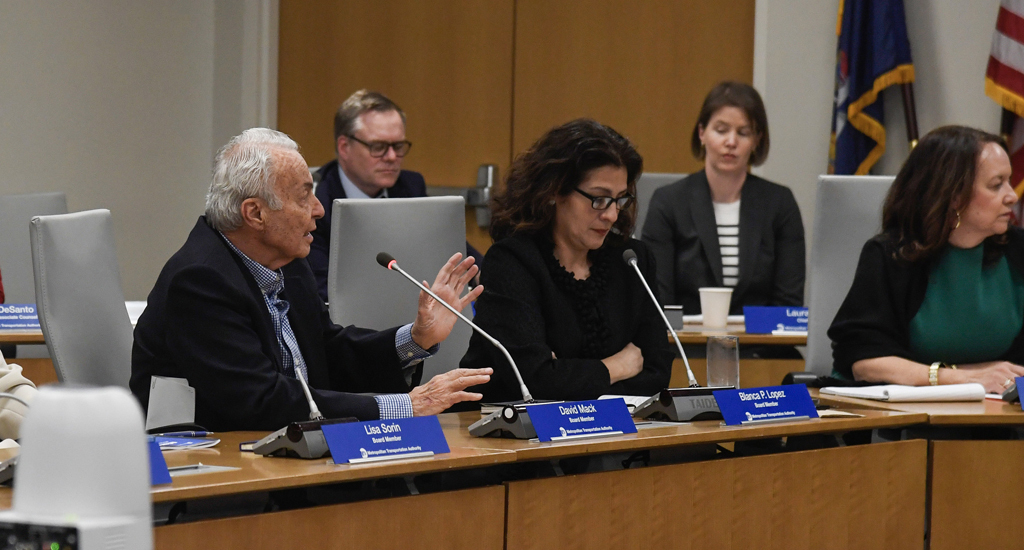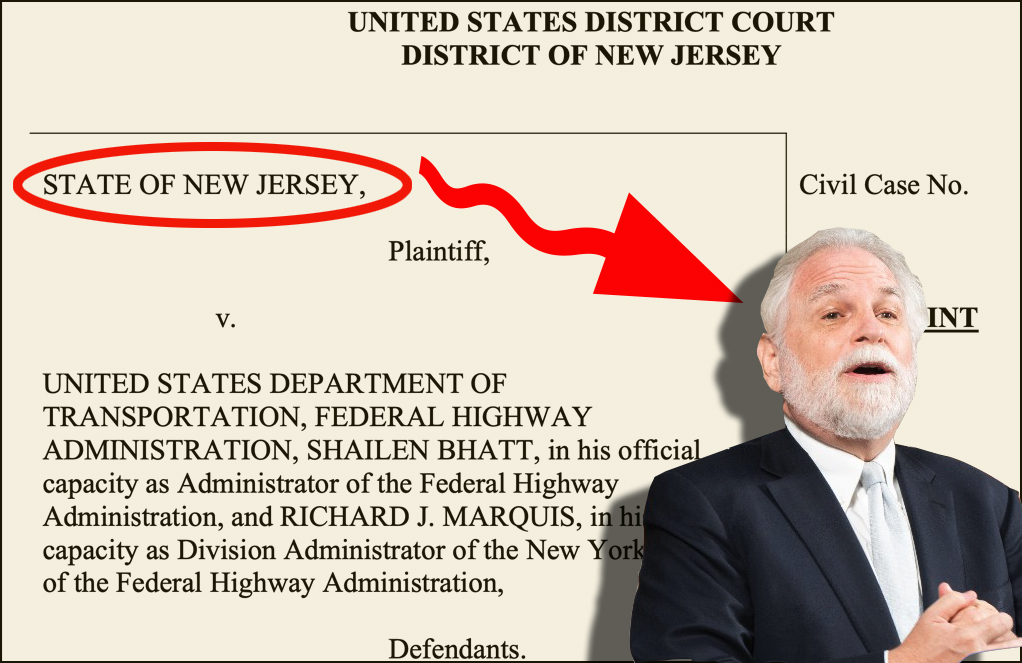De Blasio on Vision Zero: “We Have to Act Right Now to Protect Lives”
4:45 PM EST on February 18, 2014

At PS 75 on the Upper West Side today, just blocks from where 9-year-old Cooper Stock was struck and killed by a turning taxi driver last month, Mayor de Blasio released the blueprint [PDF] for how his administration will achieve Vision Zero, its goal of eliminating traffic deaths within a decade.
"We have to act right now to protect lives," de Blasio said. With elected officials to his left and families of traffic violence victims to his right, the mayor said that he sees "this mission in terms of our core responsibility in government, which is the health and safety of our people."
"It's about much more than speed bumps and the issuing of violations. It's also about all of us taking greater responsibility," de Blasio said. "Every time we get behind the wheel and every time we step out into the street, our lives are in each others' hands."
The report is focused squarely on deadly and dangerous driving, and most of the attention at today's press conference -- from the mayor and press alike -- focused on traffic enforcement, with street redesigns trailing closely.
"Over the last five years, 70 percent of incidents involving pedestrian fatalities involve the issue of speed or failure to yield," Police Commissioner Bill Bratton said. "The department's efforts going forward will focus very significantly on those types of violations." This is a shift for Bratton, who at last month's press conference unveiling the Vision Zero agenda said 73 percent of collisions are due to pedestrian error.
Today's press conference was just blocks from the busy intersection of West 96th Street and Broadway, where the 24th Precinct launched a jaywalking crackdown last month, and the first question from the press today was about whether Vision Zero would include jaywalking tickets. De Blasio said, as he did last month, that jaywalking tickets are not part of the Vision Zero agenda, but added that precinct commanders have discretion to issue summonses to pedestrians if they deem it necessary.
A grin spread across Bratton's face as the reporter asked about jaywalking. "With our resources, we're going to put our focus on where we can have the most impact, most quickly," he said, "And that is on dealing with the vehicular component."
Bratton announced that Chief Thomas Chan, who took over NYPD's community affairs bureau last April, has been tapped to head the Transportation Bureau. Bratton added that TrafficStat, the department's street safety initiative, would play a significant role in Vision Zero. "Chief Chan proposes to immediately open that up to the entities that are involved in this plan, so we can share our information," he said.
The plan also calls for more safety oversight of for-hire vehicles and stronger consequences for taxi and livery drivers. "TLC drivers play a particular role in our city; they set the tone on our streets," de Blasio said.
"Livery, yellow, non-commercial drivers -- everyone should be held accountable," said Transportation Committee chair Ydanis Rodriguez, himself a former livery driver. "We have to reduce the number of fatalities in our city."
Some of the big changes de Blasio is proposing require cooperation from Albany, and the mayor thanked Governor Cuomo for his "strong support" of speed cameras. The Vision Zero report calls for city control over the number of cameras used for speeding and red light enforcement. Under current law, Albany has to enact any addition to automated enforcement cameras in New York.
De Blasio called reducing the speed limit "the most holistic way to approach the problem with our partners in Albany," and spoke of the wide-ranging impact lower speed limits could have. "The default speed limits on streets filled with pedestrians shouldn't be at a level that could be fatal to pedestrians," the mayor said. "They have to be at a level that will give a maximum chance of saving pedestrians' lives."
For its part, DOT would expand many of its safety programs, with a focus on re-engineering large arterial streets that are particularly dangerous for pedestrians. Signal retiming and lower speed limits on major arterials could be enacted soon, and, like the recent speed limit reduction on Prospect Park West, would not require state action.
De Blasio emphasized the important role local elected officials and community groups play in street safety projects. "They're in the best position to help us achieve these goals because they realize how urgent this is to the people we represent," he said. "People are demanding very tangible and local solutions they can see and feel, and that's what we intend to do."
After today's event, Manhattan Borough President Gale Brewer spoke about the advisory role of community boards. Brewer's office has gathered a list of traffic safety hotspots from community boards, and encouraged other borough presidents to do the same. "They know what the problem is -- speeding, turns, crossings, seniors, schools," she said of community boards. "In my experience, the community board is not always adept at figuring out what has to be done."
"When there's a compelling safety issue, really it's a matter of life and death, if the community board for whatever reason is not acting, then DOT needs to move forward," said Council Member Mark Levine, who like other council members has urged the city to implement street safety plans over the objections of community boards. "I'm happy that DOT is given CB input, but at the end of the day, I think we need to reserve the option of DOT moving forward," Levine said.
"There is a sense of moral imperative and urgency here, and we are going to bring that to our work with communities," Transportation Commissioner Polly Trottenberg told Streetsblog. "But we have to be partners with them. You have to balance that."
"In putting design changes in a Vision Zero framework, it's going to be much easier for communities to understand the benefits that these changes bring to their streets," Transportation Alternatives Executive Director Paul Steely White said. "Given the urgency of Vision Zero, will we see a commensurate urgency in the application of additional resources to fix those dangerous streets? We're all hoping the answer to that is yes."
White noted that the mayor's budget did not include a major boost for street safety, but that the months-long budget process currently underway could yield additional resources for DOT.
"We are working with the mayor's office and OMB to look at everything we're doing internally and figure out how we can best allocate our existing resources," said Trottenberg. "If we need to do more going forward, then we're going to have that discussion with City Hall."
White said that he is counting on council members to make street safety a priority during budget negotiations. First, though, the council will hold an oversight hearing on the mayor's Vision Zero agenda next Monday.
"The hearing will be the first formal discussion that we'll have at a city level," Rodriguez said. "We expect to have the commissioners from Mayor de Blasio's administration at the hearing."
For some, today's event was about more than just policies and hearings. "You don't assume that something like crossing the street could turn into something this big," said Greg Thompson, whose 16-year-old sister Renee was killed by a turning truck driver on the Upper East Side last September. "The abundance of support, including the mayor's, is something I didn't expect. I'm definitely grateful for that."
"If you speak up and you step into their offices," he said, "then they do listen, and that's what surprised me most."
Stay in touch
Sign up for our free newsletter
More from Streetsblog New York City
Deal Reached: Hochul Says ‘Sammy’s Law’ Will Pass
The bill, though imperfect, has been four years in the making.
Komanoff: A ‘Noise Tax’ Can Ground NYC Helicopters
A proposed $400 “noise tax” on “nonessential” flights is a start — and it will work.
Thursday’s Headlines: Welcome to the War on Cars, Scientific American
Our favorite story yesterday was this editorial in an unexpected place. Plus other news.
Meet the MTA Board Member and Congestion Pricing Foe Who Uses Bridges and Tunnels For Free Every Day
Mack drives over the transportation authority's bridges and tunnels thanks to a rare perk of which he is the primary beneficent.
Randy Mastro Aspires to Join Mayor’s Inner Circle of Congestion Pricing Foes
The mayor's reported pick to run the city Law Department is former deputy mayor under Rudy Giuliani and notorious foe of bike lanes and congestion pricing.




